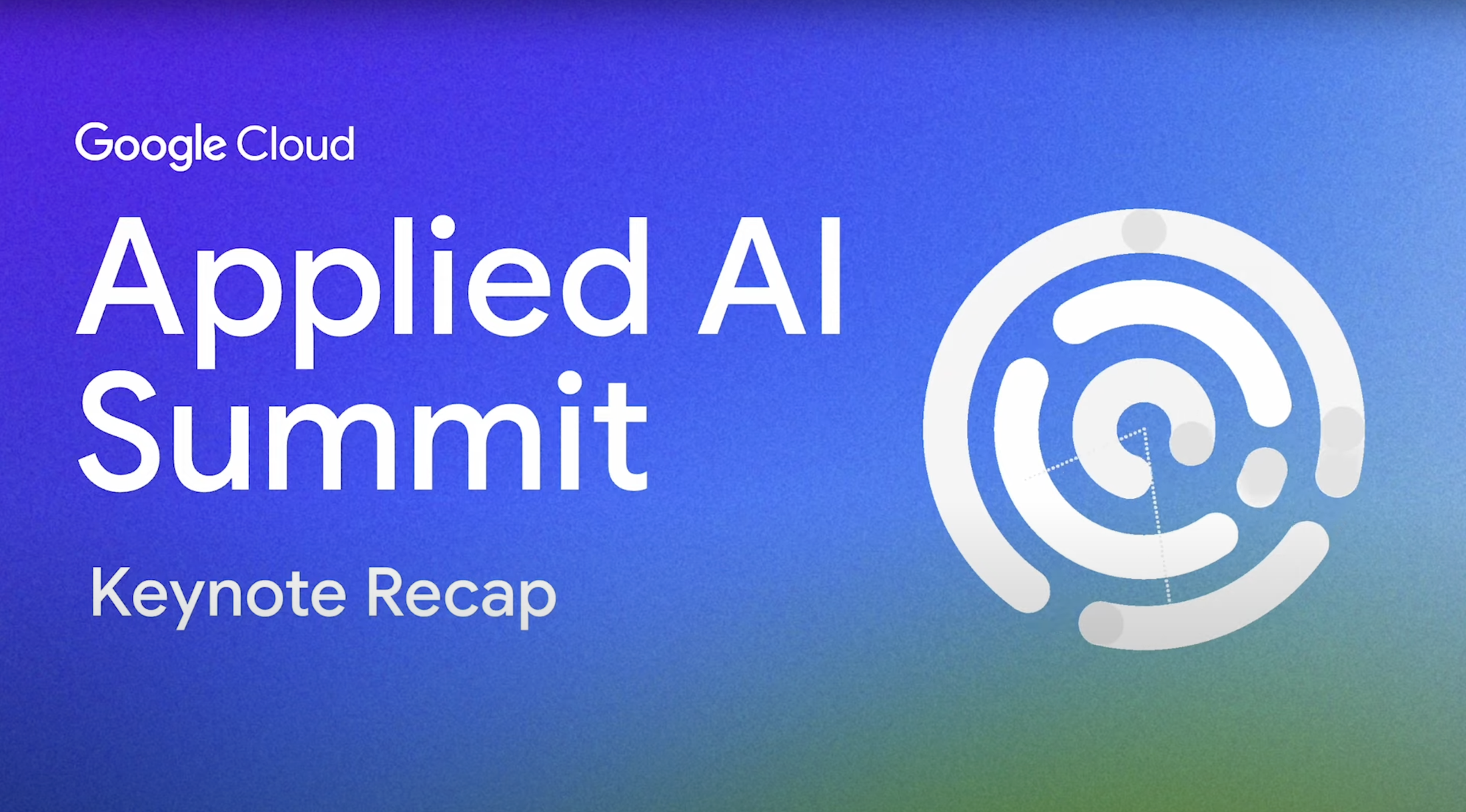Ask OCTO: Introducing our new enterprise tech advice column

Will Grannis
VP and CTO, Google Cloud
In our monthly Ask OCTO column, experts from Google Cloud's Office of the CTO answer reader questions about the solutions to their business and IT challenges.
The motto of Google Cloud’s Office of the CTO is “collaborative, practical magic.” The team is made up of Google Cloud technical experts and former CTOs of leading organizations, all of whom work in the service of helping our largest and most strategic customers tackle their biggest challenges.
Now they’re here to bring that same magic to you.
Our new monthly Ask OCTO series is Google Cloud’s version of an advice column — except the relationships we're looking to improve are the ones in your tech stack. Please submit questions for future columns here.
In this, our inaugural edition, we explore getting the most out of your AI deployments; data management in the age of AI; reliable sustainability metrics; and the best emerging technologies that aren’t AI.
How can we get the most out of the amazing set of AI tools and technologies, while minimizing risky or manipulative practices? –Dario
Grace Mollison, solutions lead, London office: For any tool or technology, the first step is to take a step back, look at your business problem, and clearly articulate what outcomes you would like to achieve; then see where the current offerings might help you achieve those outcomes. Particularly for AI, you’ll likely want to modify or tune existing models to suit your needs.
AI is amazing, but it’s still like any other tool. You still need to think logically and prescriptively about the best ways to utilize it. There are some great gen-AI-based solutions that have emerged in the past year to address a specific — and rapidly expanding — list of use cases.
Summarization, for example, whether it’s in email, meeting notes, or contact-center requests, is one powerful example. We’ve even worked with Wendy’s to make drive-thru ordering clearer, helping speed up orders and boost customer satisfaction. In a different field, our MedPalm models are supporting groundbreaking new medical research and more effective care for a number of healthcare institutions.

Still, you can’t expect these models to produce perfectly personalized and on-brand marketing copy without careful human input and review. Nor will AI replace the warm, caring demeanor of attentive hospital staff. What it can replace is all the menial work that takes away from worker’s expertise. Knowing, and embracing, the limits of your AI will be the secret to its success.
And just as knowing the limitations of a model is powerful, so is knowing the risks and keeping due focus on them.
If everything in AI starts with your data, and you’re hyper-concerned about protecting it, you’ll really focus on ensuring your databases are organized, secured, and cleaned of personally identifiable information. Being hyper-focused on data leakage forces you to think about mitigations and vulnerabilities. Widespread awareness of the potential risks posed by gen AI can be a good thing: It’s a forcing function to take security and transparency seriously.
As data becomes increasingly central to business success, especially due to AI, how do you envision the evolution of data management strategies for enterprises? And how do you balance the need for insights with the importance of data privacy and compliance? – Mary D., New York
Sarah Gerweck, technical director, Sunnyvale office: AI out of the box is not going to fully understand your business. AI can figure some things out by looking at your database. It can even help you on the journey to get your data in order. But your people and your data remain essential sources of intelligence.
Luckily, data management hasn’t fundamentally changed — good data was always useful, but now it’s more important than ever to have your data house in order, and the sooner the better. Start with understanding what data you have, and cataloging it so it can be discovered and used. Key factors include where it came from, its appropriate use, and any associated contracts or guarantees. Where possible, empower your teams with tools to own this metadata along with the data itself.
As for balancing innovation and security, you’ll want to build on your updated data foundation with principled access controls and the ability to audit how data flows through your enterprise. Good discovery and governance actually create the space for teams to have the agility and independence necessary to experiment with AI or other new ideas in less sensitive areas while still promoting caution where it’s needed.
Dean Hildebrand, technical director, Seattle office: As Mary’s question deftly points out, data is critical to business success, but it isn’t one size fits all. Different applications have different needs, so it is typically impossible to store all of your data into a single storage system. Much of the current data growth is in unstructured data, but even traditional structured data is being stored across a variety of different database-like systems. A common pattern, for example, is for organizations to have data in BigQuery, our premier data warehouse for data-analysis projects, Cloud Spanner as the primary system of record, and Cloud Storage for all unstructured data such as docs, images, and videos.
While this ever-growing amount of data will continue to be siloed, data management must evolve from a similar siloed approach to a common system that can secure, catalog, find, and connect applications to the data wherever it’s stored. Ideally data management will offer the appearance of data centralization while not actually having to copy all data in an organization into a single system (which in most cases is infeasible).
In other words, bring data management to the data instead of forcing the data to the data management system.
There are many headwinds, though, to building a unified data management system: organizational control, privacy, access control, compliance, and new emerging regulations. As we enter the AI era, where access to data is crucial in driving organizational value and differentiation, it is critical to overcome these challenges. Fortunately, the cloud gives us the platform on which we can build controls that give each team confidence to share and process data across the organization while continuing to ensure it is durable, protected, and compliant.
One of the main challenges on decarbonization and sustainability is the accuracy and availability of data. How can enterprises navigate their data to drive credibility on their numbers for investors and stakeholders? –Felipe D., Singapore
John Abel, technical director, London office: This is a very broad topic, so one of the best ways to approach it is by focusing on Scope 1 (direct), Scope 2 (energy usage), and Scope 3 (indirect) greenhouse gas emissions.
You have to start with understanding the landscape of the emissions across an enterprise. Finance data can be a good source for this, using metrics such as expenses, travel, logistics, accounts payable, receivables, etc. Once you understand the landscape, then start to consider what data is available that is accurate and available for each metric.
One aspect of all businesses is technology, and increasingly cloud technology, which means working with your cloud provider can be a good way to learn more about your scope 1, 2, and 3 emissions. Google Cloud, for example, offers a carbon dashboard that quantifies gross emissions and detailed ones, such as which applications or services may be the biggest polluters.
Comparisons to industry peers is another approach to validate the alignment of your data. CDP or NZDPU are among the organizations that can provide industry-based data. Understanding the data in relation to life-cycle assessments and science-based targets can also provide good insight.

The most complex aspect is Scope 3, which can be as varied as the exhaust from employees’ daily commute to the sustainability practices of partner companies. Due to the upstream supply chain, you will have a good relationship with your tier 1 suppliers and may know some of the tier 2. But it’s challenging to get a full picture.
Some approaches to consider: ask suppliers to implement data contracts to obtain good quality data; look at regulations that can also provide data (e.g. the EU Regulation on Deforestation-free Products); and explore third-party data sources, such as Google Earth Engine, that can provide insights and comparisons.
Decarbonization and sustainability are a complex domain very dependent on your main business activities. Fortunately, there’s a growing field of cloud-based services and partners that can help make sense of it all.
What is the most exciting technology currently that’s not AI? - LinkedIn poll
Jack Ngare, technical director, Nairobi office: I think for me it would be edge computing, which brings the best of cloud services to almost any location. With data residency, privacy and AI regulations becoming widespread and localized, it's difficult for any cloud provider to have a footprint everywhere. Couple this with the need for ever-faster compute and lower latency processing closer to where the business activity is happening — especially now with the increasing application of AI. Edge services like Google Distributed Cloud offer a strong value proposition to anyone seeking to run what they want, where they want without losing the core cloud capabilities they’ve come to rely on.
Gemma Garriga, technical director, Sunnyvale office: The idea of "exciting technology" is for me tech that has the potential to make the world better. Two areas come to mind right now: Robotics and human augmentation, because the fusion of robots and AI can lead to massive improvements in industries like manufacturing or space exploration. And then clean energy technologies, because beyond powering our modern lives and driving the economy, this tech can have an impact into environment and mitigating climate change.
Massimo Mascaro, senior technical director, San Diego office: With everyone so focused on gen AI, I think reinforcement learning is an interesting area. It’s another AI technique that’s quite complementary to gen AI and also seeing many notable advances. The important aspect of reinforcement learning is that it allows you to train AIs by exploring the environment, rather than requiring lots of data or examples of how to solve a problem. This approach supports AI that can solve problems for which we don't have good training datasets and for problems to which we don't know the solution.
Opening image created with MidJourney, running on Google Cloud, using the prompt: a colorful magazine-style illustration that illustrates the concept of a unified data management system.

